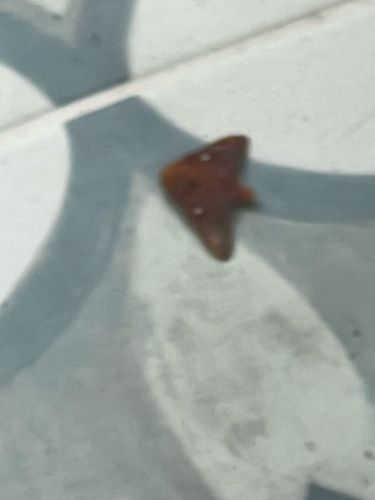Moth (likely a Geometrid Moth)
Scientific Name: Too blurry to determine specific genus/species, but likely within Geometridae (e.g., a 'looper' or 'inchworm' moth).
Order & Family: Order: Lepidoptera, Family: Geometridae (likely due to the triangular resting posture)
Size: Varies widely depending on the species; Geometrid moths typically range from 1 to 5 cm (0.4 to 2 inches) in wingspan.

Natural Habitat
Moths can be found in a wide variety of habitats, including forests, grasslands, deserts, wetlands, urban gardens, and agricultural areas, depending on the specific species and its host plants.
Diet & Feeding
Adult moths often feed on nectar from flowers, decaying fruit, or sap. Some species do not feed as adults. Larvae (caterpillars) are typically herbivorous, feeding on leaves, stems, or roots of various plants.
Behavior Patterns
Moths are typically crepuscular or nocturnal, though some species are diurnal. They are known for flying erratically towards light sources at night. Larvae (caterpillars) are primarily herbivorous, feeding on specific host plants. Adult moths usually have a short lifespan, focused on reproduction.
Risks & Benefits
Risks: Some moth larvae can be agricultural pests, causing damage to crops or ornamental plants. A few species can be allergen sources for sensitive individuals. Benefits: Moths are important pollinators for many plants, especially those that bloom at night. Their larvae serve as a food source for many animals, including birds, bats, and other insects. They are also indicators of environmental health.
Identified on: 9/4/2025